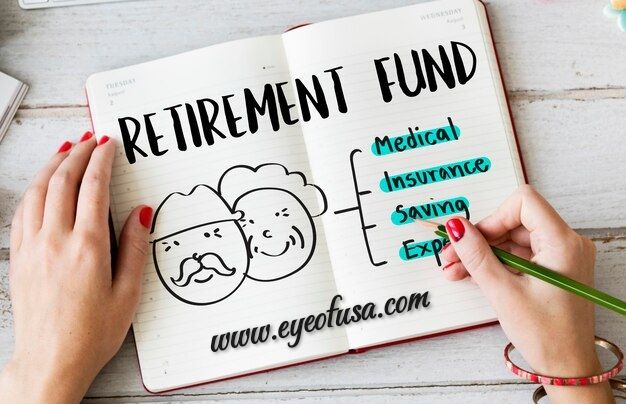Insurance is more than just a financial tool—it’s a safety net that protects you and your loved ones from life’s uncertainties. Whether it’s an unexpected health crisis, a sudden disability, or the need for long-term care, insurance provides the peace of mind that you’re covered. In this comprehensive guide, we’ll walk you through the essentials of different types of insurance, helping you make informed decisions to secure your future.
Understanding Life Insurance: What You Need to Know
Life insurance is one of the most important financial products you can buy. It ensures that your loved ones are financially protected in the event of your untimely death. But understanding which type of life insurance to choose can be daunting.
There are two main types of life insurance: Term Life Insurance and Whole Life Insurance. Term life insurance covers you for a specific period, usually 10, 20, or 30 years. It’s generally more affordable and straightforward, making it an excellent choice for young families or those on a tight budget. Whole life insurance, on the other hand, covers you for your entire life and includes a cash value component that grows over time. This type of policy is more expensive but offers additional benefits, like borrowing against the policy’s value.
When choosing life insurance, consider how much coverage your family would need to maintain their lifestyle without your income. Factors like mortgage payments, education expenses, and daily living costs should guide your decision. By ensuring you have adequate coverage, you provide your family with the financial stability they need during difficult times.
Do You Need Disability Insurance?
Your ability to earn an income is your most valuable asset, yet it’s something many people overlook when planning their financial future. Disability insurance is designed to replace a portion of your income if you become unable to work due to illness or injury. Without it, a sudden disability could leave you struggling to pay bills and maintain your standard of living.
There are two types of disability insurance: Short-Term Disability Insurance and Long-Term Disability Insurance. Short-term disability insurance typically covers you for a few months to a year, providing income replacement during a temporary disability. Long-term disability insurance, however, kicks in after your short-term policy ends and can last for several years or even until retirement.
When choosing a policy, consider the waiting period (the time between the onset of disability and when benefits begin), the benefit period (how long you’ll receive benefits), and the percentage of your income that the policy will replace. It’s also essential to understand the definition of disability under the policy—some only cover you if you’re unable to work in any occupation, while others cover you if you can’t work in your current job.
Disability insurance may seem like an unnecessary expense until you need it. Real-life stories often highlight the devastating financial impact of sudden disabilities, emphasizing the importance of being prepared.
Choosing the Right Health Insurance Plan
Health insurance is crucial for managing medical costs and ensuring access to quality care. However, with so many options available, choosing the right plan can be overwhelming. The key is understanding the different types of health insurance plans and how they fit your needs.
The most common types of health insurance plans include Health Maintenance Organization (HMO), Preferred Provider Organization (PPO), Exclusive Provider Organization (EPO), and Point of Service (POS) plans. Each type offers different levels of flexibility, coverage, and cost.
- HMO plans require you to choose a primary care physician and get referrals to see specialists. They offer lower premiums and out-of-pocket costs but limit your choice of healthcare providers.
- PPO plans provide more flexibility, allowing you to see any doctor without a referral. They typically have higher premiums and out-of-pocket costs but offer a broader network of providers.
- EPO plans are similar to HMOs but without the need for referrals. However, they still restrict you to a network of providers.
- POS plans combine features of HMOs and PPOs, offering some flexibility while requiring referrals for specialists.
When choosing a health insurance plan, consider factors like premiums, deductibles, copayments, and the network of doctors and hospitals. It’s also important to evaluate your healthcare needs, such as whether you have ongoing medical conditions, prescription medications, or prefer specific doctors. By carefully comparing plans, you can find the one that offers the best balance of coverage and cost.
Homeowners vs. Renters Insurance: Which Is Right for You?
Whether you own your home or rent, protecting your living space and belongings is essential. Homeowners insurance and renters insurance both provide coverage, but they serve different purposes.
Homeowners insurance is designed for those who own their homes. It covers the structure of your home, personal belongings, and liability protection in case someone is injured on your property. This type of insurance is crucial for protecting your investment and ensuring you can rebuild or repair your home after a disaster.
Renters insurance, on the other hand, is for those who rent their living space. While it doesn’t cover the building itself, it protects your personal belongings from theft, fire, and other covered perils. Renters insurance also includes liability protection, covering you if someone is injured in your rental or if you accidentally damage someone else’s property.
The key difference between these two types of insurance is what they cover. Homeowners insurance is typically more expensive because it covers the entire structure, whereas renters insurance is more affordable and focuses solely on your belongings and liability.
Deciding which type of insurance you need depends on whether you own or rent your home. If you own, homeowners insurance is a must. If you rent, renters insurance is an affordable way to protect your belongings and peace of mind.
Long-Term Care Insurance: Is It Worth It?
As we age, the likelihood of needing long-term care increases. Long-term care insurance is designed to cover the costs of services like nursing homes, assisted living, and in-home care—expenses that are often not covered by traditional health insurance or Medicare.
Long-term care insurance is particularly important for those who want to protect their savings and ensure they receive the care they need without burdening their family. However, it’s also one of the more complex types of insurance, with varying coverage options, benefit periods, and elimination periods.
When considering long-term care insurance, it’s essential to weigh the costs against the potential benefits. Premiums can be high, especially if you wait until later in life to purchase a policy. However, the cost of long-term care can be financially devastating without insurance, making it a worthwhile investment for many.
Personal stories often highlight the emotional and financial strain of providing long-term care for a loved one, underscoring the value of being prepared. By planning ahead and understanding your options, you can make an informed decision about whether long-term care insurance is right for you.
Conclusion
Insurance is a critical component of any comprehensive financial plan. From protecting your income and health to ensuring your loved ones are financially secure, the right insurance policies offer peace of mind and stability in an unpredictable world. By understanding the different types of insurance and carefully evaluating your needs, you can build a solid foundation for your future and safeguard what matters most.
Remember, the best time to review and update your insurance coverage is now. Life is full of surprises—make sure you’re prepared for them.
by eyeofusa.com








